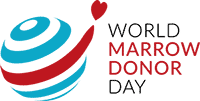Become a donor
Becoming a donor is relatively easy and you will be joining the millions of donors and cord blood units already listed in the Search & Match Service of the WMDA. Although there are already many donors, there is an urgent need for more because for over 30% of patients we are not able to find a matched donor in this global registry, especially for patients with mixed race or from ethnic minorities suitable donors are lacking.
Find out which organisation is active in your country and whether you are eligible to be a donor through the tool below:
40,237,663
DONORS
816,725
CORD BLOOD UNITS
Who
Who can become a donor?
If you wish to become a life saving donor you must be:
- 18 – 60 years old (age limits may vary per country)
- in good health
- ready to donate for any patient in need
To donate umbilical cord blood, a future mother must generally be:
- over 18 years of age
- in good health
- pregnant without complications
- registered well before the onset of labour
Why
Why become a donor?
Blood cancer can be cured by a blood stem cell, marrow or cord blood transplantation if a suitable donor can be found. Only in 30% of the patients a suitable donor can be found within the family. Seventy percent therefore rely on the worldwide register of unrelated donors for a possible cure of their disease. You could be the one match for them and give them a second chance at life.
How
How to become a donor?
If you meet the criteria, you may register as a donor with one of the national organisations. Find out which organisation is active in your country and whether you are eligible to be a donor through the tool below.

